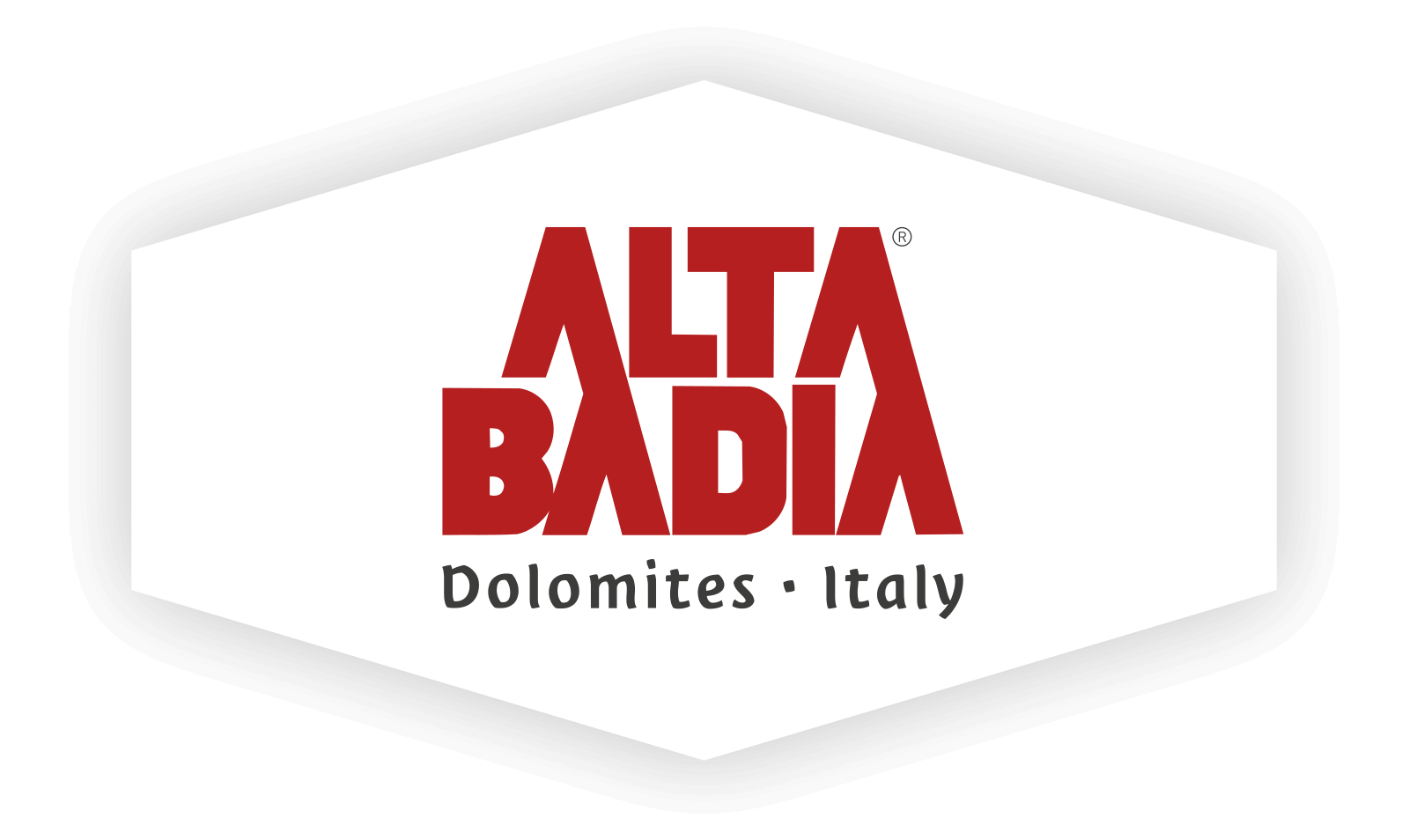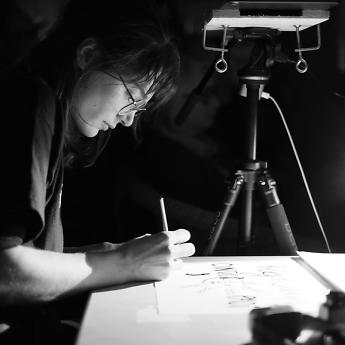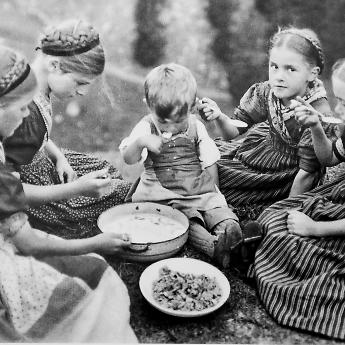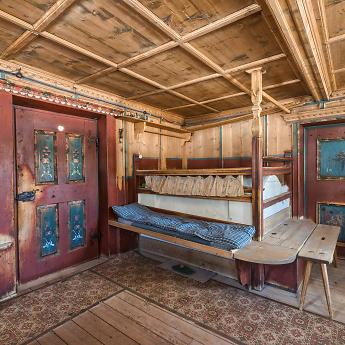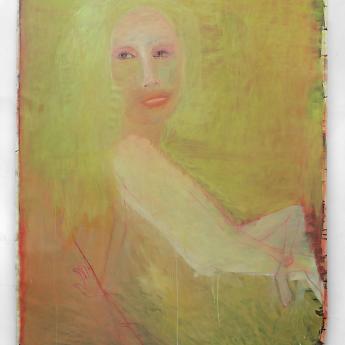
The Tavellas
…and they are still creating, happily ever after...
Once upon a time there was a little village in the heart of the Dolomites where the people who lived there had special gifts: some of them could create worlds with colors, others could tell stories with a few quick brushstrokes and then there were those who composed music with tree branches. These astonishing gifts were not the only thing they had in common: they were all called Tavella and they had all grown up in the enchanting village of La Valle (Wengen in German), which is now in Alta Badia. Most likely they were descendants of the Fanes, a legendary people who in ancient times had settled in this valley together with its splendid mountains, living in harmony with the marmots, eagles and all the other creatures that lived there. In any case, the Tavellas were children of the woods and trees that surrounded them, they grew up with the way the light and color of the sun played on the pale mountains around them and they listened to the sounds and songs of nature throughout every season.
There is no other way of explaining either this or the exceptional presence in La Valle (a village of just 1,400 people) of three outstanding talents in the world of modern art, namely Barbara Tavella, Tobias Tavella and Ursula Tavella. Equally, it is not difficult to understand how, regardless of their shared surname and close family ties, the three artists share much more than their common origins. It would not be wrong to say that their artistic talent is an innate trait or better yet, a primordial force inherent within each of them, even a kind of expressive need that is ineradicably linked to nature, a form of oneness. Yet this bond with nature has never been “voyeuristic” or veiled by any romantic illusion: the Tavellas are part of what surrounds them and that from which they draw. They are human beings who cannot help but express themselves through their respective artistic practices and it is clear that the long and legendary legacy of Ladin culture, the entirely unique scenery of Alta Badia with its isolation from the world and closeness to nature has influenced the creativity of these artists.
Snow White and Rose Red
Barbara Tavella was born in 1972 and studied art and painting at the Brera Academy of Fine Arts in Milan. Today she lives and works in La Valle in a light-flooded atelier, where the canvases are hung up like wet clothes on specially made frames and supports.
For some time now Barbara has abandoned the stretcher frame, at least for most of the large-scale paintings she produces. These might well represent a sort of “second skin” for the artist and perhaps they are, since they all seem to come from the parallel universe created by Barbara, created from metamorphic creatures and landscapes flooded with color, blurred figures in pastel tones that flow into more defined lines and brighter shades, in which one viewer sees an animal-like creature while another may see a plant or a human head. There is no denying the fact that Barbara Tavella has the ability to create magical images which change from one moment to the next depending on her mood and the time of day. Each image is like a sea on which the viewer can float, looking at its surface or even into its depths, on a range of different levels. Barbara herself seems to come from the deepest dimensions of her pictorial world: there is something ephemeral in her appearance and her being. On the door of her studio there is a quote by Lao Tzu: “What the caterpillar calls the end of the world, the rest of the world calls a butterfly”.


Table, set yourself!
Tobias Tavella was born in 1990 and studied at Berlin’s Universität der Künste. Today he lives and creates in La Valle and Bolzano and in the same way that everything that the mythical Greek King Midas touched turned to gold, everything that Tobias Tavella touches becomes art.
Defining him simply as a sculptor would be condescending as well as wrong, since Tobias constantly creates complex spatial installations and soundscapes and sometimes both together. His works stand out on account of the juxtaposition of different materials, ranging from natural ones found in the woods, to those of an industrial origin and therefore produced by man. Tobias juxtaposes and combines them with masterly skill, managing to create sculptures and installations in which both the “objet trouvé” as well as the setting in which the work is located are fundamental aspects. Both individually and as a member of a number of collectives, he actively promotes the importance of offering creative professionals and amateur enthusiasts an ever-increasing number of spaces and places dedicated to art. As a logical consequence of this approach, thanks to his presence and creative drive he dominates every environment he passes through. These “occupations” are naturally of a peaceful nature and the artist is always open to contributions and collaborations. For some time now, Tobias has also been expressing himself through music, sounds and noises and so it may well happen that his installations are used as macroscopic musical instruments, one example from among his latest works being the giant Trommel-Skulpturen. But Tobias also dedicates himself to cooking and baking, as well as organizing Live-Sound-Acts. He exists in a constant process of artistic creation, collecting impressions, objects and materials and mixing them all together to create an exciting work in progress.
The call of the wild
Ursula Tavella was born in 1980 and studied scenography at the NABA in Milan. Today she lives and works in La Valle. When she was a student, she discovered drawing as her preferred means of expression and since then, whenever she can, she loves to take refuge in this world of hers outlined with ink and pencil. Ursula worked for a considerable amount of time at Bolzano’s Teatro Comunale and is still active as a set and costume designer at various theatres in South Tyrol, such as the Dekadenz in Bressanone and the Teatro Comunale in Brunico. Her daily bread is therefore narration, however she prefers to tell stories through her drawings, which have also appeared on clothes, in books and in an animated film. Her expressive language is based on gestures and rapid movements, as if the “little monsters” as Ursula affectionately calls the creatures in her drawings, had to be immediately and necessarily transferred from her thoughts to paper through her arm and fingers, with ink or pencil. Her lines are extremely spontaneous and sketchy, which makes the creatures that appear even more vivid. These drawings are mostly in black on a white background, giving them a timelessness and a lightness that stimulates the desire to create new ones. It goes without saying that Ursula grew up listening to the legends of the Fanes and other stories connected to the mountains, forests and villages of Val Badia, although through her own work with its rapid and decisive pen strokes, she has created an “other” universe of her own, full of characters and stories.


Beyond the mountains...
La Valle is therefore the place to go if you are interested in (modern) art. Looking back, it is probably also the place to come from if you want a future as an artist, developing your talent. Having said that, the rest of the valley can also hold its own when it comes to cultural and artistic events and happenings. The valley’s main town, San Martino in Badia, is home to the Ladin Ćiastel de Tor Museum and the Ladin “Micurá de Rü” Institute, two significant institutions in terms of the history and preservation of Ladin culture and which regularly host exhibitions and events featuring contemporary art and culture.
The SMACH public art project was also set up in 2012 as a biennial open-air exhibition held in places of particular interest in Val Badia and its surroundings, at which artists present their site-specific projects as part of an international art competition. A top flight jury selects the best works at each edition, some of which become permanent works at Val dl'Ert, the so-called Art Valley. Last but not least, mention must be made of the legendary prehistoric bear, Ursus ladinicus and the museum dedicated to it, which is located in San Cassiano. Here, the history and lifestyle of the exceptional cave bear, which was exclusively vegetarian, are illustrated. This last unique aspect probably makes it the most contemporary of all bears and - in its own way - another work of art that is definitely worth a visit.
Elisa Barison works as a freelance curator and publicist. She studied History of Art and journalism at the University of Vienna and earned an MBA in Cultural Management at ICART in Paris. She is interested in the interface between processes and rural and urban spaces, and in addition to working in the cultural sector she currently produces wine and grows flowers with her partner in Bressanone.

NOS. The podcast series from Alta Badia Brand addresses all guests who are interested in learning more about us Ladins, our culture and our traditions. Meet us Ladins up close.


Sweatshirts, caps and T-shirts: the Alta Badia Brand collection delivers a unique touch of the Dolomites to the curious, adventure-seeking and nature-loving guest. Every single piece conveys the feeling of being high up in the mountains, even when you're in the city. So cool!



